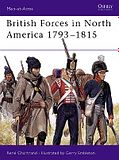
No, not you Kenneth...
One of the oddities of my collection, along with the shocking lack of Grenadiers of the Guard (sorry John), is that I'm very fond of camp followers, surgeons, vivandieres and all those other hanger on types. Admittedly, I have scaled that back somewhat as I have rather a lot of them at this stage.
The Drogheda Cossacks had a reputation for looting and pillaging, but lest we forget someone had to carry the loot, so allow me to present the official "hangers on" of the 18th Light Dragoons.
(click to embiggen)
A young chap leading some cows, stolen no doubt. I'm not au fait with the history of dairy farming in Spain, so I have no idea if the Freisian is appropriate for the Iberian peninsula. Figures from IMEX's American Pioneers set and painted by Mark Bevis and Graham Tormey.
(click to embiggen)
Another stolen piece of equipment, this time an Italeri French supply wagon accompanied by a metal figure that I think was made by Uwe Emke, but I'm not sure.
Civilians are often an interesting addition to the battlefield and often underused. Past uses have included -
1. As objectives, players have to attack/defend a wagon train, seize a particular person, etc. Seizing the French baggage train at Vittoria would be one example from the period.
2. As terrain, you can use civilians as a means of clogging up roads, complicating movement in urban areas and generally not doing what they are told.
3. As a source of intelligence. Players in my games have learned that I rarely place civilian figures on the table for no reason, they can be an invaluable source of information on local fords, where the enemy has been in the area, etc. Two examples of this sort of thing that I'm rather proud of.
a) A player observed that there was a hut on one side of the river and that there was a shepherd and some sheep on the other side. Divining correctly that a shepherd would be unlikely to traipse around to the bridge, he went looking for a ford between the shepherd and his house.
b) There were two built up areas on the board. One was populated with civilians and the other deserted. The player worked out that of the two built up areas, the ambush which he suspected had been set was most likely in or near the deserted town.









































































